The title of this post wasn’t arrived at because all but one of us were in the “Seniors” category, but because of the landscape. More on that later.
So, we are here at the top end of the Cradle Mountain – Lake St Clair National Park, and in the Southwest Tasmanian World Heritage Area. It’s a day where we have an opportunity to explore some of what is special about Tasmania – or just to have a complete rest from the rigours of the saddle.
Six of us decided to take a stroll this morning to enjoy the unique character of the place. Here we are at Ronny Creek, where the famous Overland Track begins …

At one time most people started this track further along at Dove Lake, but this has become the official starting point because of the wonderful introduction it gives to the park. Dianne and I have been here many, many times. Di is the true local and has been coming to Cradle Mountain for more than 55 years. She is the expert and this is probably her single most favourite place on Earth. We were really looking forward to sharing a bit of inside knowledge about flora, fauna and the landscape and doing that proved to be a real treat.
So, back to the title. The BBC mini-series “Walking with Dinosaurs” used this part of Tasmania as a film location for two of the six episodes. The land, and much of its vegetation is very old. Although Tasmania is rugged with lots of mountains, like the rest of Australia the land does not rise to great heights because it is so old and has become so eroded through time immemorial. The following image shows buttongrass and pandani plants which date back to those early times in the evolution of plant life on our planet …

The pandani is the largest heath plant in the world and is found only in Tasmania. Here’s a closer look at this unique plant …
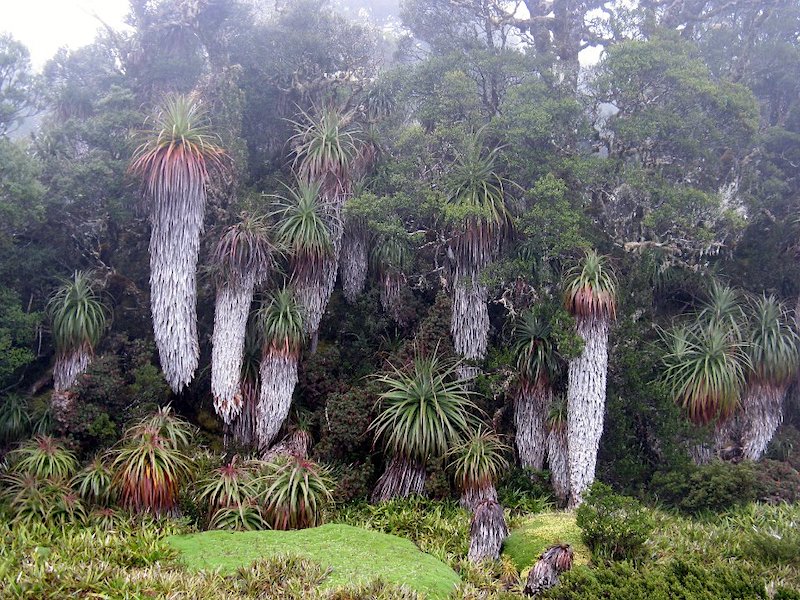
… and here’s a photo of Mark adrift in a sea of buttongrass …

Most of the fauna in this part of the world are taking refuge from the sun on a day like today, but the metallic skink will almost always be seen out on our tracks …

It’s just a tiny lizard, reaching a maximum length of about 66 millimetres.
The route we chose to walk goes through a few different vegetation regimes and the following photos will give you some idea of the diversity of the vegetation.

I have no idea what this common shrub with its bright red berries is called, but it’s found scattered around this sort of terrain …

Our track took us along the creek that drains Crater Lake. Because it runs into a bit of a cleft and is a well sheltered and wet area there are some quite large King Billy Pines – which are endemic to Tasmania – growing there …

There is an old boat shed at the lake which is a popular photo stop …

Our group took many photos of this lovely lake, which was actually created by glacial action, not an impact from some asteroid. My favourite was this one taken by Di …

Our next stop was the lovely Wombat Pool, where three of us chose to have a swim and were delighted to find the water was actually quite warm. Here are the two locals getting amongst it, while Mark was still making up his mind …

… to his credit, Mark the Mainlander did swim all the way across the lake while Di and I contented ourselves with a shorter excursion out to the middle.
Lake Lilla was the next point of interest along the way and here is George approaching it, with Dove Lake in the background …

… and here is Mark at the outflow, with a glimpse of Cradle behind and to the left …

Along the track between Lake Lilla and Dove Lake I had to stop and record this little seedling growing up between two rocks, as I couldn’t help but wonder what, if anything it would grow into …

Back at Wombat Pool as we were variously reclining, snacking and dipping we had all independently decided that we would cut our intended walk short at Dove Lake in order to escape the heat and allow for more recovery time for the start of the second phase of our cycling odyssey around the state.
Perhaps knowing this, led us all to slow down and take a few photos of Cradle Mountain as the finish of our walk neared. Here are three of the ones I took, each giving a slightly different perspective on the peak …



Finally, to finish here is an image of where our route took us …
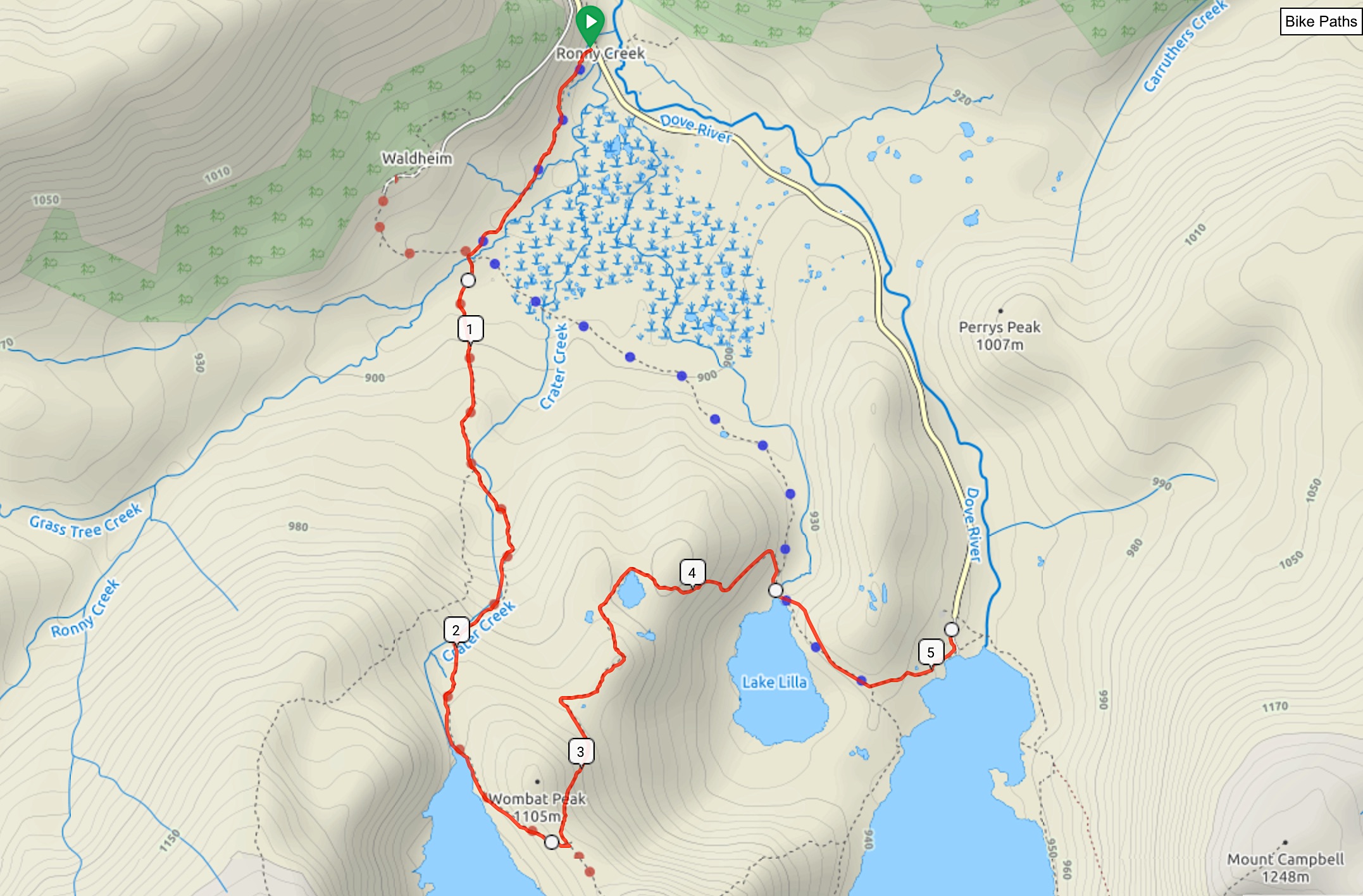
Tomorrow it’s back on the bike, when we ride from the mountains to the sea. It’s going to be GREAT!
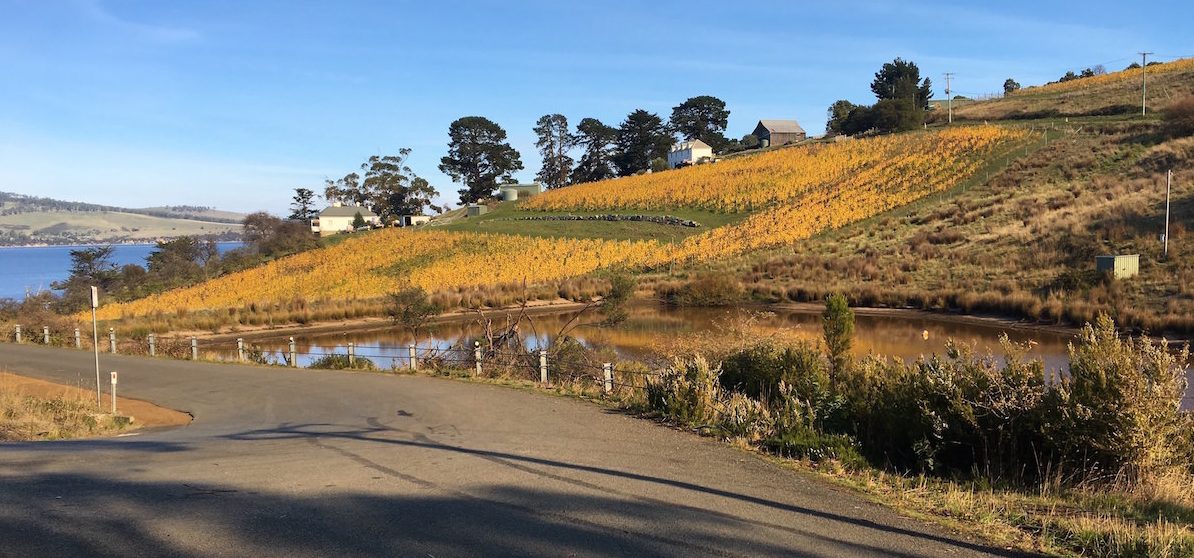
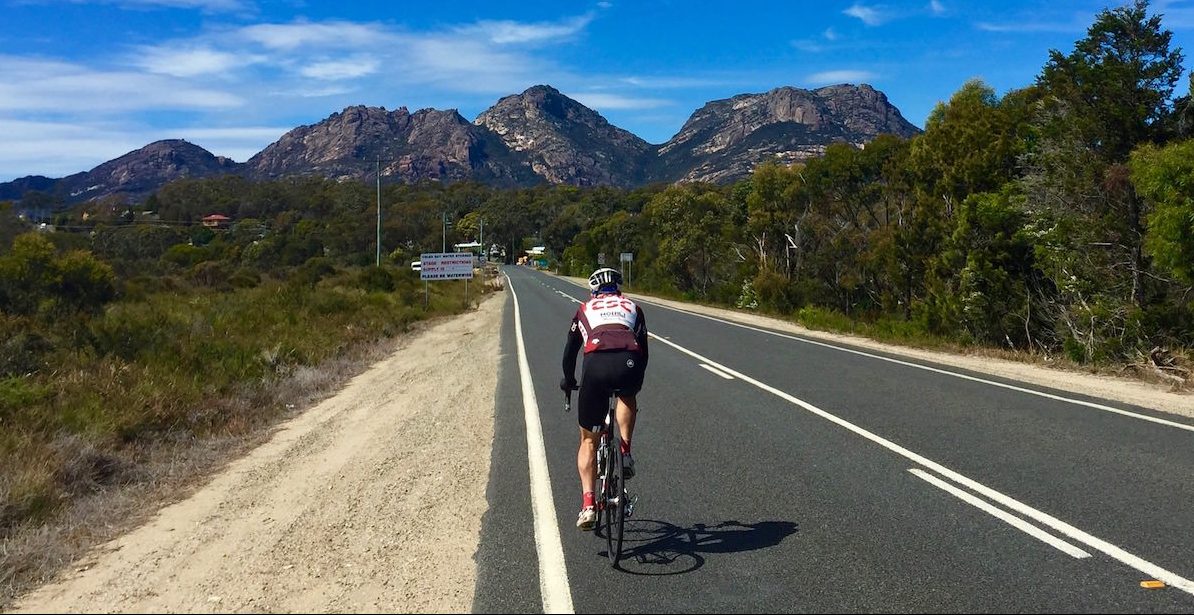

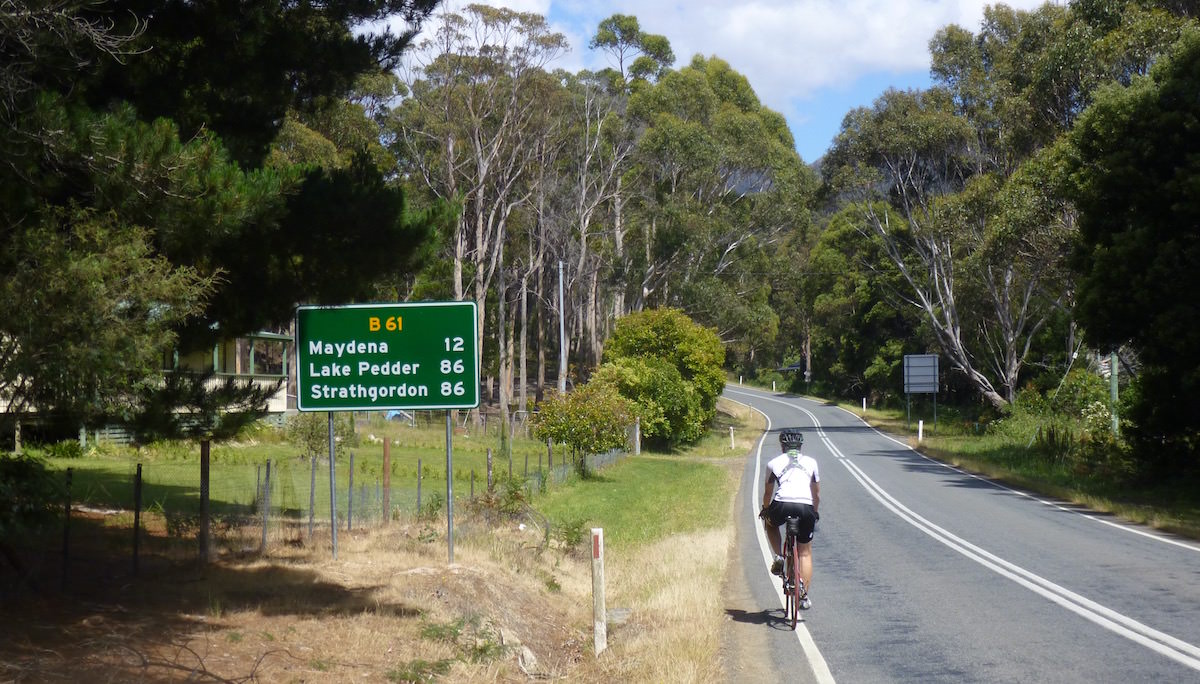


6 thoughts on “Walking with Dinosaurs”
Thanks for your comments Max, Anne, Phil and Marion. It’s great to know that at least a few folks are reading and appreciating the blog. ????
Gr8 read Sir Dougert! I remember it being as beautifully unique as you have described!!;) happy riding to the coast!
Thanks Max. Glad you are enjoying the images and words to accompany them. I hope you get a guernsey for the tour next year.
Looks amazing and what wonderful weather – thanks for sharing your experiences!
Michelle and I did the Overland track in 2000 (I think it was). Such a lovely part of the world. We recall sitting on the side of Mt Doris having lunch and gazing across the valley you could almost see the dinosaurs walking through. Have a wonderful time! ????
Great. Thanks Doug and Dianne.
Comments are closed.